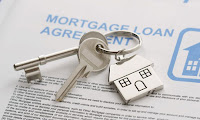A mortgage is a sum of money lent to you by a lender (bank, credit organizations) and who collects an interest rate from the amount of money they lent you. Usually, you have to pay a part of the cost of the home you intend to buy, and this is the down payment.
A down payment is the amount of money that you pay at the time of purchase toward the price of your home (your mortgage loan covers the rest). You should have a good idea of how much you can put toward the down payment before talking to a potential lender or mortgage broker. The idea is
that the bigger your down payment is, the less is the amount of interest paid in the end.
The minimum down payment for the purchase of a home depends n a number of factors like the type of home, but it is at least 5%of the purchase price of the home for the permanent residents
and at least 10% for non-permanent residents. For example, to buy a home for $300,000, you will need a minimum of $15,000 as your down payment in case of the permanent resident. In this case you are required by law to obtain Mortgage Loan Insurance from the Canada Mortgage and Housing Corporation (CMHC) or Genworth Financial Canada. The insurance premium varies according to the down payment and must either be paid at the time of purchase or added to the mortgage amount.
In addition to a lower down payment, Mortgage Loan Insurance will help you access interest rates that you otherwise wouldn’t have been able to negotiate. The cost for Mortgage Loan Insurance, called a premium, is usually offset by the savings you get from lower interest rates.
Normally, the minimum down payment must come from your own funds. You may be eligible for other loans to help you come up with the down payment. However, it is always better to save for a down payment to minimize your debts.
You may also be eligible for the Home Buyers' Plan (HBP) to help you make the down payment on your home, if you have investments in Registered Retirement Savings Plans (under the Home Buyers' Plan).
Also your down payment can come from:
- Savings accounts
- Canada Savings Bonds
- Guaranteed investment certificates (GlCs)
- Stocks, bonds, and other non-registered investments
- Tax-Free Savings Account (TFSA)
- Gifts from family or other assets.
It is better to put as big a down payment as possible, rather than to lose money on interest charges.
Take good care of your savings and invest wisely!

Aucun commentaire:
Publier un commentaire